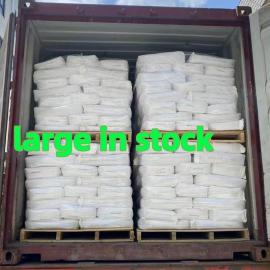-
Categories
-
Pharmaceutical Intermediates
-
Active Pharmaceutical Ingredients
-
Food Additives
- Industrial Coatings
- Agrochemicals
- Dyes and Pigments
- Surfactant
- Flavors and Fragrances
- Chemical Reagents
- Catalyst and Auxiliary
- Natural Products
- Inorganic Chemistry
-
Organic Chemistry
-
Biochemical Engineering
- Analytical Chemistry
-
Cosmetic Ingredient
- Water Treatment Chemical
-
Pharmaceutical Intermediates
Promotion
ECHEMI Mall
Wholesale
Weekly Price
Exhibition
News
-
Trade Service
in precipitation in Argentina's main agricultural areas.
Severe drought has led to downward revisions to wheat production estimates, which now threaten the potential
of soybean and maize crops.
Experts at the Rosario Grain Exchange believe that Argentina's cereal and oilseed production in 2022/23 could fall to its lowest level in 20 years, as soil moisture is already lower than in 2008/09, when farmers harvested only 31 million tonnes of soybeans
on 18 million hectares.
on 18 million hectares.
The Rosario Grain Exchange does not expect Argentina to produce more than 48 million tons
of soybeans this year.
Yield expectations may be adjusted
given that drought has delayed planting, resulting in some arable land failing to grow soybeans.
of soybeans this year.
Yield expectations may be adjusted
given that drought has delayed planting, resulting in some arable land failing to grow soybeans.
Argentina's corn production prospects are equally doubtful
.
Argentina is the world's largest exporter of soybean oil and meal and the third largest exporter
of corn.
Yet the second year in a row of droughts is destroying crops and livestock
.
.
Argentina is the world's largest exporter of soybean oil and meal and the third largest exporter
of corn.
Yet the second year in a row of droughts is destroying crops and livestock
.
Argentina's National Meteorological Service predicts that from December 2022 to February 2023, precipitation in the main agricultural producing areas, including the province of Buenos Aires in the north and Santa Fe in the south, will be lower than normal, which may lead to a decrease
in planted acreage.
in planted acreage.
Argentina's wheat production forecast has fallen to 11.
8 million tonnes from an initial forecast of 19 million tonnes and may be revised down again, and most wheat crops will be downgraded to feed grade rather than milling grade
.
8 million tonnes from an initial forecast of 19 million tonnes and may be revised down again, and most wheat crops will be downgraded to feed grade rather than milling grade
.
The Rosario Grain Exchange reminded that in 2008/09, Argentina harvested only 8.
3 million tonnes of wheat
.
3 million tonnes of wheat
.
At present, the wheat harvest in Argentina is 78.
3% complete, and the soybean sowing progress has reached 60.
6% of the planned sown area of 16.
7 million hectares, 12.
6%
behind the same period last year.
3% complete, and the soybean sowing progress has reached 60.
6% of the planned sown area of 16.
7 million hectares, 12.
6%
behind the same period last year.







